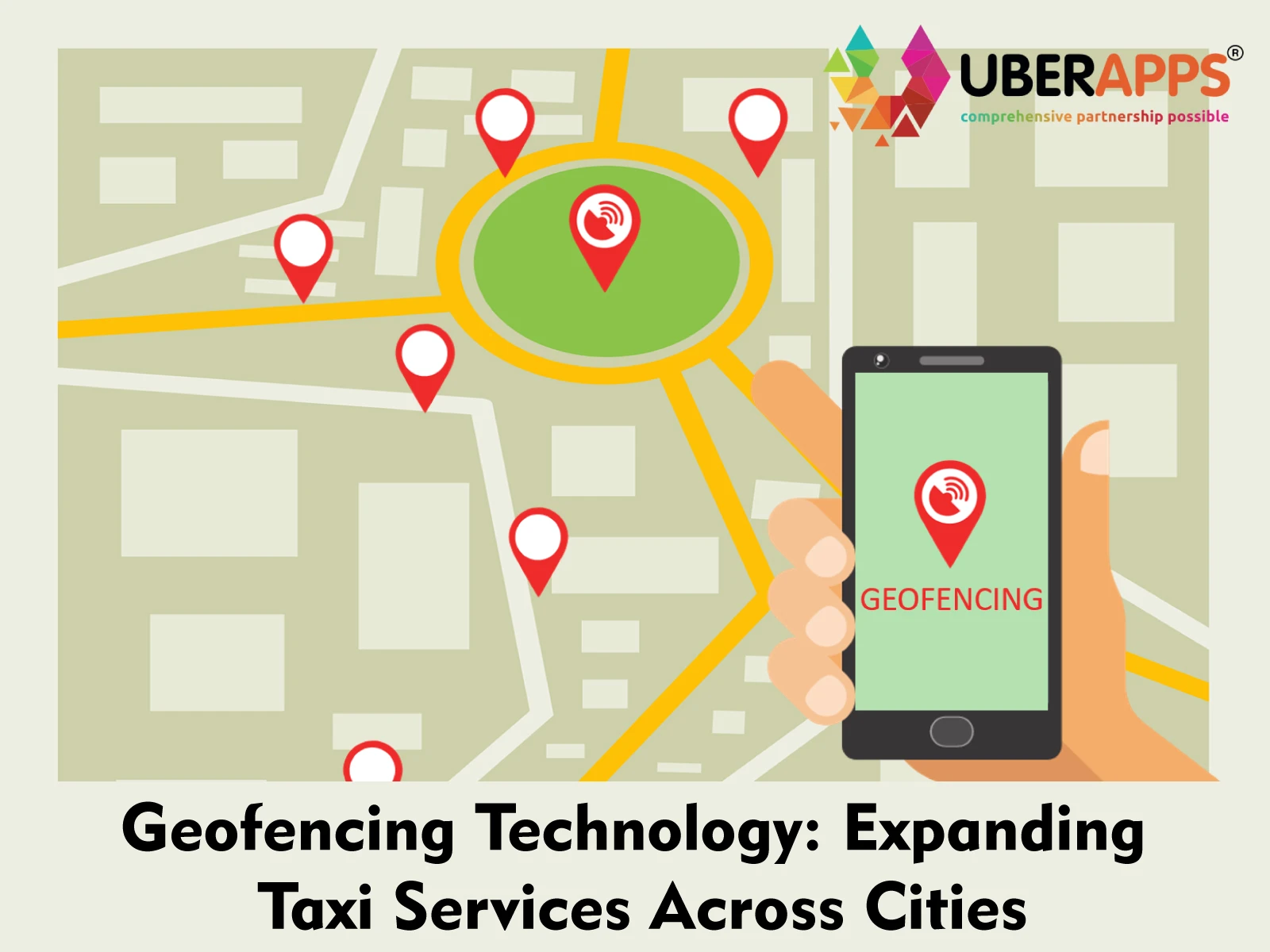
Geofencing Technology: Expanding Taxi Services Across Cities
Geofencing technology has emerged as a key game-changer for taxi booking apps, empowering service providers to define virtual boundaries around neighborhoods, cities, or strategic points like airports. By integrating geofencing with advanced GPS logic and ride-hailing algorithms, taxi app development companies can automate zone-based pricing, dispatch the nearest drivers, and manage regulatory compliance with precision.
This innovative approach enhances operational efficiency, personalizes the rider experience, and supports seamless expansion across multiple cities—all while streamlining fleet management and boosting customer satisfaction in a dynamic, on-demand market.
Geofencing technology is reshaping the taxi app development landscape. By enabling location-based automation, geofencing ensures that ride-hailing platforms can efficiently manage operations across multiple cities and zones. This intelligent system helps define virtual boundaries to control pricing, availability, driver assignments, and user experience in real time. Taxi startups and enterprises can use geofencing to scale smoothly into new regions, manage local regulations, and simplify fleet distribution. Integrating this with AI-driven analytics, GPS, and in-app payments, businesses can automate dispatch processes, improve safety, and enhance customer satisfaction. This blog explores how geofencing transforms taxi booking apps, shows its advantages for fleet owners, and provides strategies for scaling a geolocation-based taxi business.
Geofencing Technology: Expanding Taxi Services Across Cities
Modern ride-hailing platforms like UBERApps have built intelligent infrastructures that help startups expand effortlessly. Among these innovations, geofencing stands out as a core enabler for regional scaling, automation, and performance monitoring.
Understanding Geofencing in Taxi App Development
Geofencing creates a virtual perimeter around a real-world location using GPS, Wi-Fi, or cellular data. When drivers or customers enter or exit these predefined zones, the system triggers automated actions — such as enabling ride requests, adjusting fares, or sending alerts.
Key Functional Aspects
- Tracks location-based activities automatically
- Defines multiple service zones for cities and regions
- Triggers custom app behavior based on location events
- Allows policy-based pricing, distance units, and operational rules
- Enhances dynamic dispatch management and real-time tracking
Why Geofencing Matters in Taxi App Development
Taxi app development benefits immensely from geofencing because it creates smarter automation, fewer manual errors, and safer transportation networks.
Core Business Advantages
- Enables service expansion across multiple cities or countries
- Helps admins configure localized pricing models
- Supports driver prioritization in high-demand areas
- Improves ETA accuracy through zone-based routing
- Allows data-driven fleet distribution
User Experience Advantages
- Riders access accurate fare estimates within their zones
- Notifications trigger as drivers enter pick-up areas
- Supports multilingual and multicurrency setups
- Ensures operational compliance for location-based restrictions
Integrating Geofencing with an Uber Clone App
An uber clone platform like UBERApps integrates geofencing within both admin and driver panels. Administrators can easily draw boundaries around cities or zones using an intuitive map interface and assign specific operational rules to each region.
Functional Integration
- Define geofences by drawing map boundaries
- Assign pricing, drivers, and service type per fence
- Track driver availability within each virtual zone
- Auto-switch currency and distance units per city
- Restrict or allow trip bookings dynamically
Geofencing makes your app smarter and context-aware, helping taxi startups operate under multiple configurations without multiple apps.
The Backend Approach: How Geofencing Works
Taxi app developers at UBERApps implement geofencing using APIs, backend GPS logic, and real-time database triggers.
Technical Workflow
- Define GeoBoundaries – Each city or operational zone is mapped in the admin panel.
- Assign Service Rules – Fare, distance type, payment methods, and tax models get linked to that region.
- Track Movement – GPS sensors track drivers entering or leaving the fence.
- Trigger Actions – Notifications, restrictions, and pricing updates occur instantly.
- Record Analytics – Performance, heatmaps, and service demand data are stored for optimization.
This API-driven automation ensures scalability and seamless deployment across various markets.
Geofencing and AI-Powered Fleet Management
Smarter Dispatch Algorithms
AI learns which locations repeatedly have higher demand, then dynamically adjusts geofence parameters to prioritize driver allocation there.
Data-Driven Insights
Geofencing adds rich contextual data to driver and rider behavior. Fleet managers can analyze trip density, response time, and abandoned rides per zone.
Improved Route Optimization
Combining geofencing with GPS and AI produces ultra-efficient route navigation. Drivers get shorter waiting times, and riders receive faster pickups.
Multi-City Expansion Made Simple
For taxi startups expanding across cities, managing compliance, local currency, and pricing variation is often challenging. A geofencing-enabled taxi booking app simplifies this with automatic configuration.
Multi-Country Support Features
- Automatic region-based currency and tax conversion
- Geo-restricted operational boundaries
- Zone-specific promotions or surge pricing
- Localized language support per active city
This helps ride-hailing startups onboard new markets in days instead of weeks.
In-App Payments and Geofenced Pricing
Taxi app development today integrates in-app payments tightly with location systems. When zones shift, pricing models also adapt dynamically.
Benefits for Businesses
- Region-wise fare models (distance/time/toll sync)
- Automatic tax application based on driver zones
- Seamless payment gateway integration (PayPal, Stripe, Flutterwave, etc.)
- Reduces reconciliation issues for multi-city operations
Benefits for Riders
- Instant fare updates on crossing city or zone boundaries
- Consistent and transparent pricing
- Faster checkout and fewer price disputes
Geofencing combined with automated billing ensures trust and better financial control for both taxi owners and passengers.
Compliance and Safety with Geofencing
Taxi apps must meet varied regional regulations. Geofencing helps enforce compliance automatically.
Ensures Compliance with:
- Local taxi licensing requirements
- Insurance and vehicle document validation
- Driver background verification per jurisdiction
- Automatic restriction of operation in non-permitted areas
Enhanced Rider Safety
- SOS alerts trigger within zone boundaries
- Live tracking ensures riders remain visible throughout the journey
- Emergency contacts receive real-time updates
Thus, geofencing becomes not just a feature but a digital security layer.
Role of Sensors and GPS in Geofencing
Modern smartphones equipped with GPS, accelerometers, and magnetometers feed real-time data into the taxi app’s geofencing system.
Data Captured Includes
- Driving speed, acceleration, and turning behavior
- Entry or exit from pre-defined regions
- Real-time proximity to high-demand zones
Integrating this sensor data enables smarter automation, creating predictable and high-quality ride experiences.
Marketing and Driver Incentives Using Geofencing
Marketing teams can set city-wise campaigns and promotional offers using geofence logic. When a driver enters a specific location, they can receive exclusive bonuses or offers.
Examples of Use
- Rewarding drivers operating in premium or high-demand zones
- Sending localized rider offers within a geofenced city
- Promoting regional events or discounts dynamically
These personalized incentives help improve retention and daily earnings for drivers.
Advanced Features in a Geofenced Taxi System
Admin Features
- Real-time analytics for each operational zone
- Configurable surge-pricing per city
- Auto-disable services during local restrictions
- Incident management per location cluster
Driver Features
- Real-time updates upon crossing zone limits
- Automated fare adjustments
- Priority queue management for airports or stations
- In-app SOS triggers synced with local response systems
Rider Features
- Predictive fare suggestion based on pickup and drop zones
- Preferred driver allocation by city
- Transparent charge breakdowns on map view
Business Growth Benefits of Geofencing in Uber Clone Apps
- Simplifies operations across national boundaries
- Enables unified control with diversified expansion
- Allows instant service scalability
- Boosts operational transparency and decision-making speed
Taxi startups that invest early in geofencing achieve faster growth, less downtime, and higher customer retention.
Future of Geofencing in Taxi Booking Apps
In the coming years, geofencing will integrate deeper with machine learning, blockchain-based transaction monitoring, and predictive demand systems.
Emerging Trends
- Real-time fleet compliance automation
- AI-driven dynamic fare zoning
- Integration with EV and smart charging networks
- Predictive reallocation of taxis before high-demand periods
UBERApps is already building next-gen systems that combine AI, ML, and IoT sensors for fully autonomous, geofenced taxi operations.
Conclusion
Geofencing is transforming how taxi booking apps operate in dynamic urban environments. By combining real-time GPS tracking, automated pricing, and region-based compliance, geofencing enables taxi businesses to scale smarter and faster. Its ability to segment service areas into virtual zones ensures operational efficiency across multiple cities and countries. For startups and enterprises building uber clone apps, this translates to faster market entry, balanced fleet distribution, and localized user experiences.
Moreover, geofencing helps reduce manual supervision and ensures fair allocation of rides through automated dispatch and driver prioritization. It unlocks immense value by creating data-backed insights that guide businesses toward expansion strategies. As technology advances, integrating AI, IoT, and geospatial intelligence with geofencing will unlock even smarter ride-hailing experiences. Taxi businesses that adopt these tools today will have a clear edge in tomorrow’s highly competitive on-demand mobility ecosystem.
FAQS
1. What is geofencing in taxi booking apps?
Geofencing creates virtual boundaries on a digital map to manage location-based activities, like trip requests, pricing, and service availability.
2. How does geofencing help expand taxi services across multiple cities?
It automates settings for each city—such as pricing, languages, and payment modes—allowing seamless multi-regional operations.
3. Why is geofencing crucial for fleet management?
It provides real-time data on vehicle locations, demand patterns, and compliance, improving fleet utilization and reducing idle time.
4. Can geofencing improve driver and rider safety?
Yes, it enables location-based alerts, SOS triggers, and route monitoring to ensure passenger and driver safety.
5. How can taxi startups integrate geofencing technology?
Partner with a development company like UBERApps that offers built-in geofencing modules in its taxi app solutions.
Author's Bio

Vinay Jain is the Founder of UBERApps and brings over 10 years of entrepreneurial experience. His focus revolves around software & business development and customer satisfaction.

